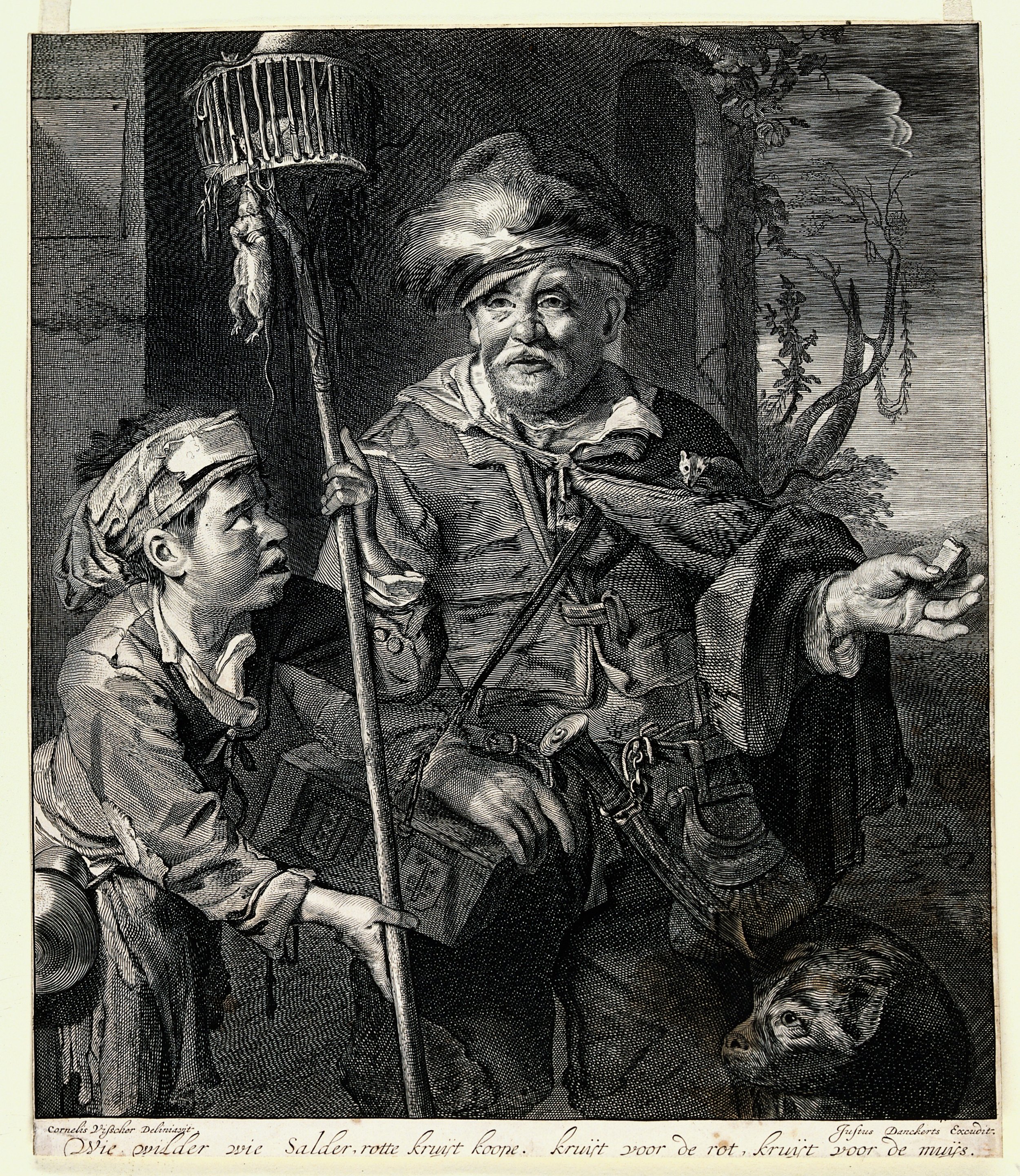Rat Catcher
Cliquez ici pour la version française
Le Chasseur de rats | The Rat-Catcher
"A rat-catcher in Haarlem with a rat running across his cape" (engraving by Cornelis de Visscher, Wellcome Collection)
A chasseur de rats, or rat-catcher, was tasked with catching and disposing of the vermin or pests in a city. He was the ancestor to today’s modern exterminator. In medieval Europe, rats and mice were responsible for spreading disease and epidemics, such as the plague. In a time when people had no refrigerators or freezers, vermin would also threaten a home’s food supply. Black rats in particular would live among the city’s inhabitants, getting into wooden houses and hiding in the straw where poorer folks would sleep.
Because of the dangers posed by vermin, the rat-catcher was actually a well respected, and very important, position in society. It was a difficult occupation, however, with rat-catchers having to go into dirty and unsanitary places, and handling potentially disease-ridden or rabid rats and mice.
Rat-catchers would attempt to catch the vermin themselves, or use animals trained to hunt and kill them. Alternatively, they could use rat traps. In France, rat-catchers would walk the city streets accompanied by cats in cages and a stick on which 2 or 3 dead rats would be hung from, all the while yelling “Mort-aux-rats!” or “death to the rats!”
The Rat-Catcher ("Rattenfänger", painting by an unknown artist, Wikimedia Commons)
In Québec, the first record we have of rat-catchers is from the 19th century. They were known as “acheteurs de rats,” or rat buyers, who offered to rid someone of the vermin in their house or barn, and actually paid the homeowner a few cents to do so (what they actually did with these rats I couldn’t determine). Others would simply sell vermin-poisoning powders or small spring-loaded traps. Some rat-catchers claimed to be gifted in the art of chasing away vermin, while others recited a spell to drive them away.
The most famous rat-catcher of all time was the Pied Piper who visited the town of Hameln in Germany. As the legend goes, the Pied Piper used a flute to lead all of the town’s rats into a river, where they drowned. When the townsfolk refused to pay him for his services, the furious Piper used his flute to lure all of Hameln’s children away, and they were never seen again. Click here to read more about this fascinating legend, and its possible origins.
"Jack Black, her majesty's ratcatcher, 1851" (drawing appearing in London Labour and the London poo, Volume 3, Wikimedia Commons)
The Rat Catcher (“Rattenfänger," 18th-century painting by an unknown artist, Wikimedia Commons)
"A rat-catcher carrying a pole with dead rats suspended" (etching by Léopold Flameng, Wellcome Collection)
Sources and Further Reading:
Ike Matthews, Full Revelations of a Professional Rat-catcher, After 25 Years' Experience, The Friendly Societies Printing Company, Manchester, 1898, published online by Project Gutenberg in 2005 (http://www.gutenberg.org/ebooks/17243), eBook #17243.
Jeanne Pomerleau, Métiers ambulants d'autrefois, Guérin, Montréal (Canada), 1990, 321-324.
Lucas Reilly, “When Queen Victoria Employed an Official Rat-Catcher,” Mental Floss (https://www.mentalfloss.com/article/91629/queen-victoria-employed-official-rat-catcher), 13 Jan 2019; updated 12 Apr 2023




